Formal Reprogramming – What Happened?

A long time ago, in a galaxy far, far away….an Over Target Baseline (OTB) – by design – was a rare occurrence (and the OTS concept did not even exist as part of Formal Reprogramming). Formal Reprogramming was a very difficult and cumbersome process that most contractors (and the government) really did not like to consider. The government, in its 1969 Joint Implementation Guide, said:
“Reprogramming should not be done more frequently than annually and preferably no more frequently than once during the life of the contract.”
The Office of the Under Secretary of Defense (OUSD) Acquisition, Analytics and Policy (AAP) – formerly PARCA – , in their latest OTB/OTS guide, states that Formal Reprogramming now has expanded to include an Over Target Schedule (OTS). However, in that guide, it is stated in Paragraph 1.3.8:
“Ideally, formal reprogramming should be done no more than one time during the life of a contract. However, there may be instances where another formal reprogramming is warranted… When formal reprogramming is accomplished in accordance with the procedures in this guide, with a realistic cost and schedule estimate established for the remaining work, it should not be necessary to undergo formal reprogramming again.”
Today, though, whenever contractors incur a significant cost or schedule variance, instead of resolving the variance cause, the first words seem to be: “Let’s do an OTB or OTS.” The lure of “getting rid of cost and schedule variances” seems too good to pass up. Unfortunately, an OTB/OTS implementation has never been an instantaneous process. With AAP’s 12 step OTB/OTS process, it is obvious that the contractor will not be able to start today and incorporate the OTB/OTS in the next Integrated Program Management Data and Analysis Report (IPMDAR) dataset. In fact, AAP’s OTB/ OTS guide states in paragraph 3.8:
“It may be difficult to ascertain the length of time it will take to implement a new baseline based on the scope of the effort. It is not uncommon for the entire process to take up to six months which would be too long of a period without basic cost reporting.”
The last line of the above cited paragraph was referencing the reporting requirements to the customer when an OTB/OTS is being implemented.
The IPMDAR Implementation and Tailoring Guide (5/21/2020) even recognizes the issues with timeliness of implementing an OTB/OTS:
2.3.2.5.5 Formal Reprogramming Timeliness. Formal reprogramming can require more than one month to implement. During formal reprogramming, reporting shall continue, at a minimum, to include ACWP, and the latest reported cumulative BCWS and BCWP will be maintained until the OTB/OTS is implemented.
So why does it take so long to implement the OTB/OTS? Can the contractor just adjust the bottom line variances and move on? Actually no, nothing is really that simple. This is one of the reasons that implementing an OTB and OTS should not be taken lightly. The AAP OTB/OTS Guide addresses adjustments this way:
“3.5.6.2 Adjusting Variances: A key consideration in implementing an OTB is to determine what to do with the variances against the pre-OTB baseline. There are essentially five basic options. This is a far more detailed effort than these simple descriptions imply, as these adjustments have to be made at the detail level (control account or work package).”
When considering the number of control accounts and work packages involved in a major contract, a Formal Reprogramming can become a rather daunting task. The contractor also has to report the effects of the Formal Reprogramming in the IPMDAR Reprogramming Adjustments columns. These adjustment columns appear on both Format 1 and Format 2 of the IPMDAR database, which means the contractor must undertake the assessment for both the contract’s WBS and the OBS – for each WBS element and for each OBS element reported. This can be further complicated if the OTB/OTS exercise were flowed down to subcontractors for a given program. The AAP OTB/ OTS Guide, paragraph 3.8 also states:
“The customer should be cognizant of the prime contractor’s coordination complexities and issues with its subcontractors. The time to implementation may be extended due to accounting calendar month overlaps, compressed reiterations of contractor ETC updates, internal reviews, subcontractor MR strategy negotiations, senior management approvals, etc., all while statusing the normal existing performance within a reporting cycle.”
In the early days, when implementing an OTB with variance adjustments, the company and the customer agreed on a month-end date to make the data adjustments. Then the contractor ran two CPRs or IPMRs (now the IPMDAR): (1) the first report as though no OTB had been implemented [to determine the amount of adjustments to cost variance (CV) and schedule variance (SV) at all the reporting levels] and, (2) the second report [after the OTB implementation had been completed – no matter how long it took] showing the Column 12 adjustments plus whatever BAC changes were being implemented.
Under the current OTB/OTS Guide, it appears as though this process is being done all at once. As stated in the AAP OTB/ OTS Guide paragraph 3.8 above, this implementation could take up to 6 months to complete, so lagging the second report until the OTB/OTS implementation is completed seems logical. The last sentence in paragraph 3.8 also stipulates that regardless of how long implementation takes, the contractor and customer will agree on interim reporting that will be required, further stating that:
“In all cases, at least ACWP should continue to be reported.”
Perhaps this agreement with the customer should also specify the content of the first IPMDAR following OTB/OTS implementation.
All things taken into account, the process of requesting and getting approval for an OTB or OTS can be a long and difficult process, especially if, at the end of it all, the contractor’s request is denied. Even if it were approved and the contractor implements and works to the newly recognized baseline, immediately doing another one is not a pleasant thought – and remember, it was not intended to be pleasant. Reprogramming was always supposed to be a last resort action, when reporting to the current baseline was totally unrealistic.
Now, what about those cases where a contract has one or two elements reporting against totally unrealistic budget (or schedule) baselines? The AAP OTB/ OTS Guide does cover a partial OTB, but reiterates that this is still an OTB because the Total Allocated Budget (TAB) will exceed the Contract Budget Base (CBB). In the early days, however, the government allowed what was called Internal Operating Budgets (IOBs) for lower level elements (control accounts, or specific WBS elements, etc.) that were having problems resulting in an unrealistic baseline for the work remaining. The 1987 Joint Implementation Guide, paragraph 3-3. I (5) described IOBs as follows:
“(5) Internal Operating Budgets. Nothing in the criteria prevents the contractor from establishing an internal operating budget which is less than or more than the total allocated budget. However, there must be controls and procedures to ensure that the performance measurement baseline is not distorted.
(a) Operating budgets are sometimes used to establish internal targets for rework or added in-scope effort which is not significant enough to warrant formal reprogramming. Such budgets do not become a substitute for the [control] account budgets in the performance measurement baseline, but should be visible to all levels of management as appropriate. Control account managers should be able to evaluate performance in terms of both operating budgets and [control] account budgets to meet the requirements of internal management and reporting to the Government.
(b) Establishment and use of operating budgets should be done with caution. Working against one plan and reporting progress against another is undesirable and the operating budget should not differ significantly from the [control] account budget in the performance measurement baseline. Operating budgets are intended to provide targets for specific elements of work where otherwise the targets would be unrealistic. They are not intended to serve as a completely separate work measurement plan for the contract as a whole.”
Current literature no longer specifically addresses Internal Operating Budgets (IOBs), but with the recent trend of contractors jumping to the OTB/OTS conclusion, it might be a better alternative to have individual instances of unrealistic budgets (or schedules) that do not otherwise push the total program to the need for a complete OTB and/or OTS implementation.
These could be good discussion topics for future AAP and DCMA meetings with industry representatives, to determine if there are ways to streamline the process, or at least reduce the amount of requests to implement Formal Reprogramming. Variances are, after all, performance measurement indicators that should not just be routinely and artificially eliminated.
Formal Reprogramming – What Happened? Read Post »

 Recently one of our consultants was instructing a session on the
Recently one of our consultants was instructing a session on the 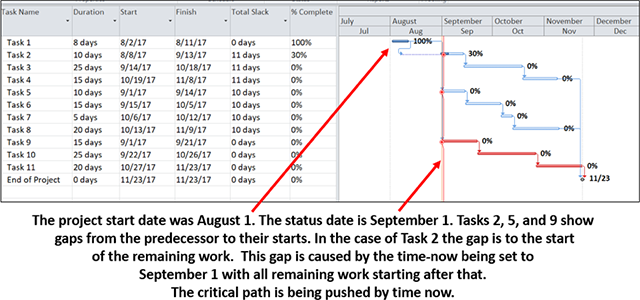
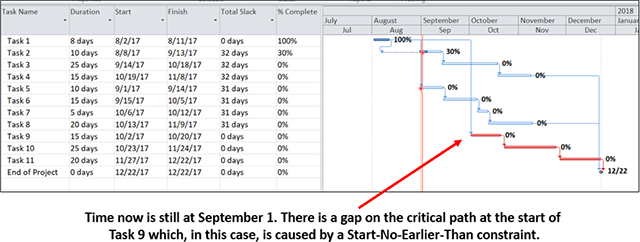
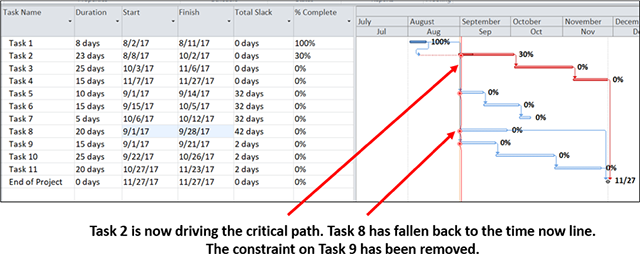
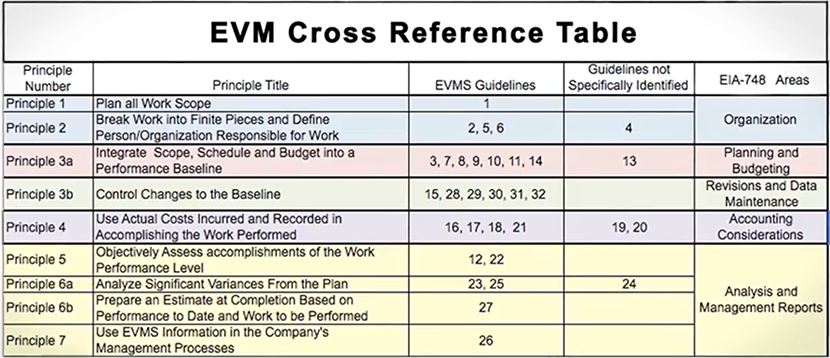
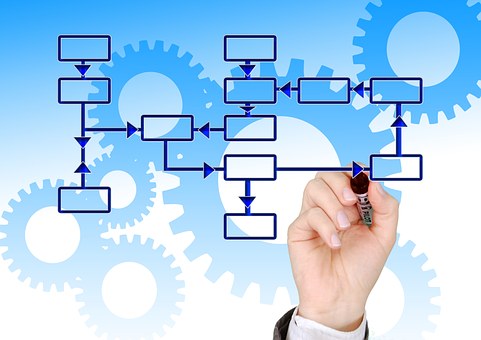
 I have read several
I have read several